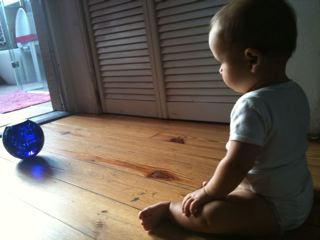According to Nemours, asthma affects about 1 or 2 kids out of 10, making it the most common chronic disorder in childhood, currently affecting an estimated 7.0 million children under 18 years. While most common in school age kids, asthma can start at any age — even in a little baby or an adult.

Over a century ago, F.M. Alexander spoke about some children being “poor breathers” from birth. He went on to say that these children entered life with less than optimal reflexive ease at the head, neck and upper back (The primary control) and needed help in order to overcome this deficit. Here is a story of one of my young students (I will call him Terry (not pictured)), and his AT experience.
Terry’s Story
Terry was about 9 months old, not yet walking when he started taking Alexander Technique lessons. He had presented with asthma from one month or less and had been rushed to the emergency room a few times. His parents were ill with worry about it, but gave him the medicines to control the symptoms and curb the attacks. His mother was a pupil and one day she brought him along, as she had no sitter. I noticed at once that this head/neck relationship was not as free as we’d expect in a child and then she told me about his condition.
I suggested we try “lessons” (I never charge a fee for such young children) and so we started then and there. At first Terry was fussy and didn’t like his head and neck touched but gradually he quieted down and seemed to enjoy it. We noticed a change that day in the depth of his breathing and it was decided he would come 3 times a week so we could see what help if any the Alexander Technique gave him. In less than 6 “lessons” he was able to take half the medicines and didn’t gasp for air or have the sudden onset attacks he had had before. But of course it was only 2 weeks. So we continued on for 6 months this way. He started to crawl and as he did, I worked with his head and neck because his inclination was to stiffen that area as he moved. He caught on quickly and as he went on to standing, getting his balance and finally walking, I went on with the work. By the time he was walking his head neck remained quite free (as it ought to be normally in a child this age) and the asthma was minimal. He was given medicine when pollens and allergens were bad and has not had any violent attacks since his 2nd week of lessons.
Terry is now 2 and a half. His asthma is nearly gone and his doctor is happy that he is “outgrowing it.” Terry and his parents are happier. Terry sleeps well and runs without effort because his breathing is free. If this continues he may not have it at all when he is older.